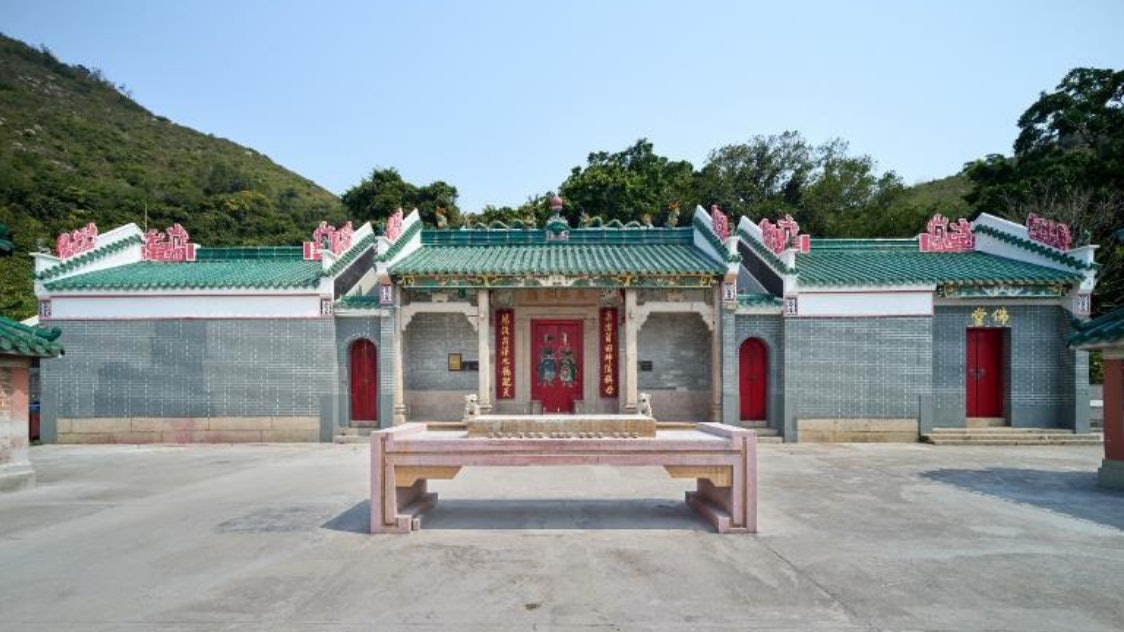The Antiquities and Monuments Office proposed that the Tin Hau Ancient Temple of the Buddha Hall in Sai Kung and the Central Clubhouse of the Chinese YMCA of Hong Kong before Sheung Wan be "upgraded" to declared monuments, dating back to the Southern Song Dynasty and 1918 respectively, among which the Tin Hau Ancient Temple of the Sai Kung Buddha Hall Gate is a two-into-three-bay building that preserves more than two centuries of divine items, including the iron incense burner cast during the Jiaqing period of the Qing Dynasty and the bronze bell cast during the Daoguang period, witnessing the tradition of worshipping Tin Hau in Hong Kong.
The former Central Church of the Chinese YMCA of Hong Kong was used as an air defense unit and sheltered refugees during the Japanese occupation, witnessing the growing importance of the Chinese and is now a community centre and shelter workshop.
The Antiquities Office pointed out that the two historical buildings are in good condition and have important cultural heritage value, and believe that they have reached the high threshold for declaring them permanent protected monuments, and the owners and management departments have also agreed to the relevant decision, and the Council will meet next Thursday (8th) to discuss.
+4
The latest document of the Ancient Monuments Office pointed out that the Tin Hau Ancient Temple of Buddha Tang Gate is located on the north shore of Tai Miao Bay in Sai Kung, commonly known as "Tai Miu" ("great temple"), which is believed to be one of the oldest existing Tin Hau temples in Hong Kong, although the actual year of its construction cannot be determined, but from the rock inscriptions behind the temple, it can be seen that the temple is closely related to the Southern Song Dynasty.
The Tin Hau Temple consists of a row of five buildings, a "two-hall-three-bay structure", with two annexes on each side. Over the past two centuries, worshippers' offerings have remained in the main hall, including artifacts such as an iron incense burner cast in 1803 and a bronze bell cast in 1840. The document describes the artifacts in question as witnessing the history of the main hall and the tradition of worshipping the Queen of Heaven.
The document mentions that although the temple has undergone several restorations, its overall environment and spatial layout can still maintain its original appearance, with granite pillars, incense pavilion murals, screen doors, wooden cornices, floor tiles and other building fabrics all intact, while the surrounding environment of the temple remains in its original state, describing the temple as a prominent example of the only remaining Tin Hau temple in Hong Kong that is still close to the sea.
The document states that the Tin Hau Natsu over the past few decades has attracted thousands of believers from all over Hong Kong to worship the temple, demonstrating the temple's important historical and social value, and describing it as "representing the traditional religious practices of fishermen and other members of the seafarer community, reflecting the importance of Tin Hau's faith in Hong Kong".
+3
As for the former Hong Kong Chinese YMCA Central Clubhouse, now known as "the Bridges Street Centre", built in 1918 as the first headquarters building of the Chinese YMCA in Hong Kong, the purchase and construction costs were jointly donated by the YMCA North American Association and local Chinese businessmen, including Ma Yingbiao, founder of Sincere Department Store, Kwok Lok, and Hong Kong's first Chinese Legislative Council member Ng Tingfang. Hong Kong's first knighted Chinese Ho Kai and Dr Lee Shu-fen said that the Chinese contribution to the building was indispensable, indicating the growing influence of Chinese leaders and businessmen in the early 20th century.
The iconic six-storey building with a symmetrical façade made mainly of red brick and concrete, the central clubhouse blends Western neoclassical elements with local Chinese elements, and the clubhouse still contains Hong Kong's first heated indoor swimming pool, gymnasium and auditorium with screening rooms. The document states that the building's multifunctional layout is modeled after other YMCAs in North America, describing the features and equipment that make the central clubhouse more modern and advanced.
The Central Clubhouse provided a wide range of social services and was requisitioned as a section A terminus for the Anti-Aircraft Ambulance Corps during the Japanese War to accommodate refugees, and is now used as a community centre and shelter workshop.
190 Nathan Road is to be downgraded to Grade II Historic Building Sheung Wan Pang Yu Tai Tea House is to be rated as a Grade III Grade II historic building Shek O Bus Terminus renovated Ancient well found Unearthed "Zhongba" stop sign before Lamma Police Post is to be rated as a Grade III historic building Police have applied for demolition The Ancient Advisory Council has postponed the rating of the <>-year-old Lee Min Mansion Staff Dormitory in the Old North District to be listed as a Grade II historical building The former Lamma Police Post is proposed to be rated as a Grade <> historic building
